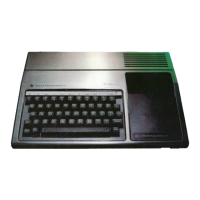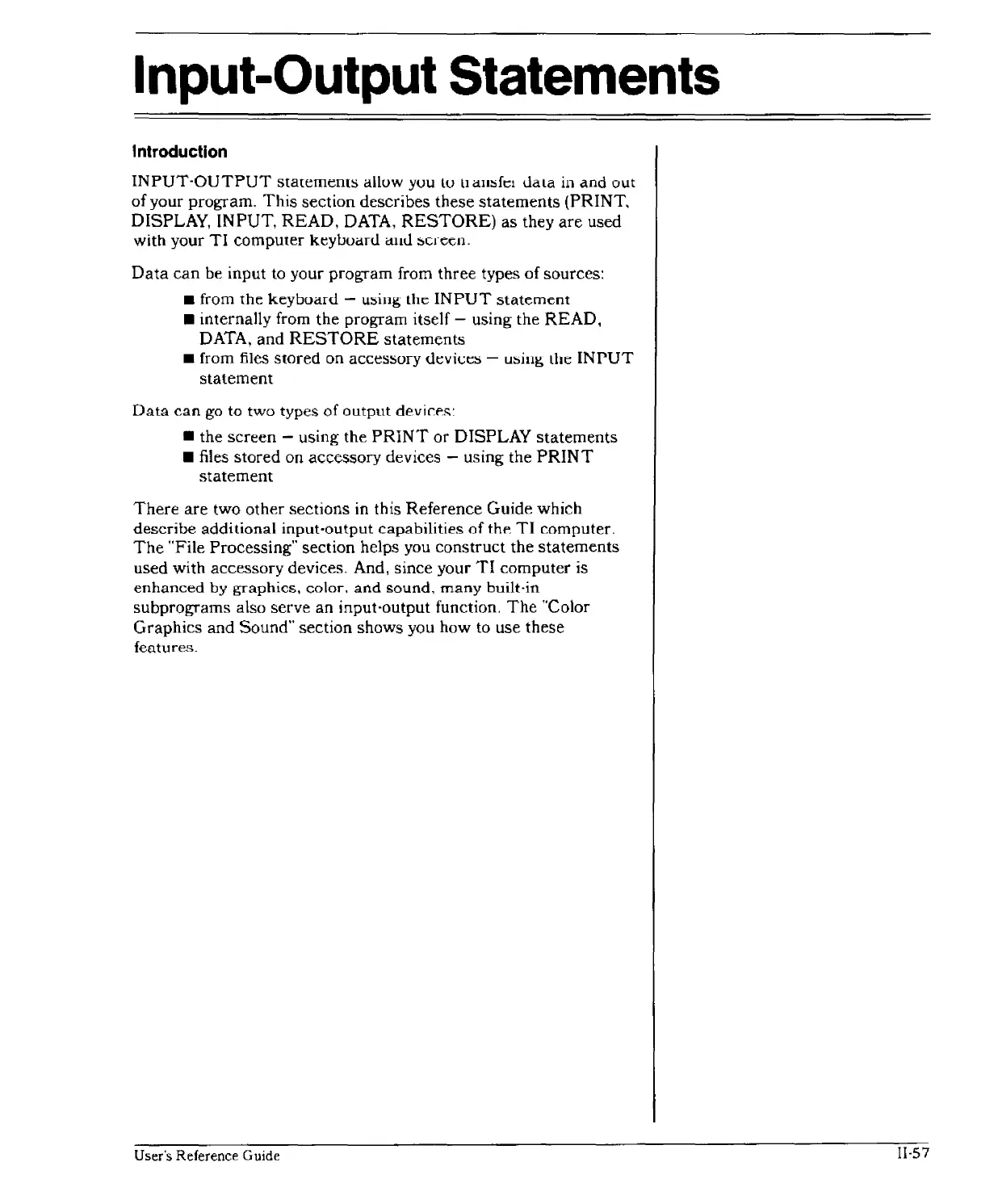Input-Output
Statements
Introduction
INPUT-OUTPUT
statements
alluw yuu
tu
tl
Ciuskl
uata
in and
out
of your program.
This
section describes these
statements
(PRINT,
DISPLAY, INPUT,
READ,
DATA,
RESTORE)
as
they
are
used
with your
TI
computer keybuaru
CillU
screen.
Data
can
be input to your program from three types
of
sources:
• from the keyboard -
using the
INPUT
statement
• internally from the program itself - using the
READ,
DATA, and
RESTORE
statements
• from files stored on accessory devil:es -
usiul!,
the
INPUT
statement
Data
can
go
to
two
types
of output
devi~f's:
• the screen - using the
PRINT
or
DISPLAY
statements
• files stored on accessory devices - using the
PRINT
statement
There
are two other sections in this Reference Guide which
describe additional input-output capabilities
of
the
TI
computer.
The
"File Processing" section helps you construct the
statements
used with accessory devices. And, since your
TI
computer is
enhanced
by
graphics,
color.
and
sound,
many
built-in
subprograms also serve
an
input-output function,
The
"Color
Graphics and Sound" section shows you how to use these
features.
User's Reference Guide
II-57

